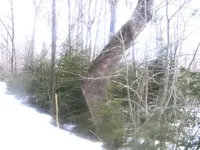rangler
Bronze Member
- Joined
- Jul 12, 2004
- Messages
- 1,320
- Reaction score
- 201
- Golden Thread
- 0
- Detector(s) used
- for solutions to the jesuit code -email pics to: randy_ferringer@yahoo.com
;rangler8@gmail.no locations needed! oro bro!
- Primary Interest:
- Other
- #161
Thread Owner
edong
I agree with Old Dog - if your marker was found here in the US - but i believe that
this marker was found -'way back in the phils'- and that throws a new slant on the
item. The Japanese often used cement as surface markers to confirm that a cache
was indeed nearby. Of course you should also have carved boulders, animal faces
kanji script characters, drill holes, trees planted in triangles etc.
I have seen flat square cement surface about 18" square and about 3-4 inches thick
I see this just as an over all confirmation marker, now the S and the 218 could very
well be a compass heading- so keep that in mind.
Go back to the stone markers, a turtle, or fish, etc, this will direct you to the triangle
mostly designated by a very large and old tree, some not native to the Phils.
Some of the triangle points may be half buried rocks. Take photos of all boulders
and rocks at high noon, or so and look for shadows.
Regarding your photo, again I agree with Old Dog it does look like Roman Numerals,
however I dont see anything to confirm that this is not natural, since I see it out of
context to other marks.
A suggestion is to stand at the cement post marker and take the compass heading to
the Roman Numeral stone and see if that heading is 218 degrees? If so this would
be your needed confirmation marker.
More pics of the other monuments if you can , will help unravel your puzzle!
auriferiously
rangler
"persistence pays"
I agree with Old Dog - if your marker was found here in the US - but i believe that
this marker was found -'way back in the phils'- and that throws a new slant on the
item. The Japanese often used cement as surface markers to confirm that a cache
was indeed nearby. Of course you should also have carved boulders, animal faces
kanji script characters, drill holes, trees planted in triangles etc.
I have seen flat square cement surface about 18" square and about 3-4 inches thick
I see this just as an over all confirmation marker, now the S and the 218 could very
well be a compass heading- so keep that in mind.
Go back to the stone markers, a turtle, or fish, etc, this will direct you to the triangle
mostly designated by a very large and old tree, some not native to the Phils.
Some of the triangle points may be half buried rocks. Take photos of all boulders
and rocks at high noon, or so and look for shadows.
Regarding your photo, again I agree with Old Dog it does look like Roman Numerals,
however I dont see anything to confirm that this is not natural, since I see it out of
context to other marks.
A suggestion is to stand at the cement post marker and take the compass heading to
the Roman Numeral stone and see if that heading is 218 degrees? If so this would
be your needed confirmation marker.
More pics of the other monuments if you can , will help unravel your puzzle!
auriferiously
rangler
"persistence pays"



 !! Very cool maps.
!! Very cool maps.







